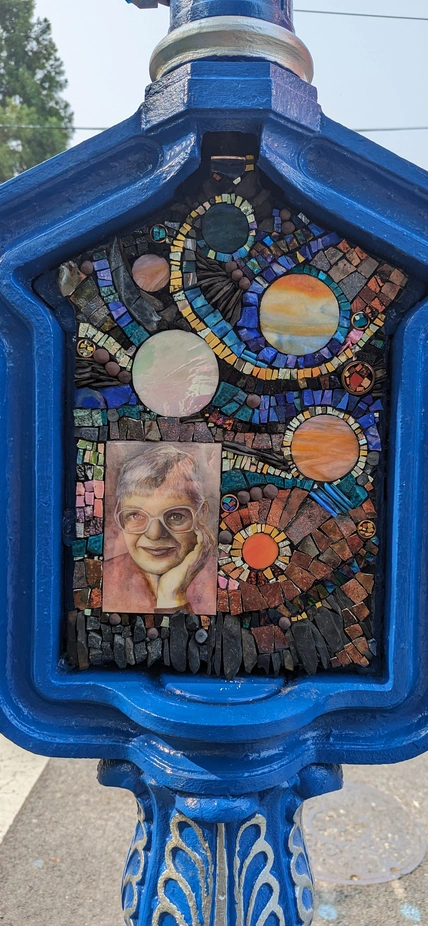There’s a new call box in town!
In late June, a quiet corner in the Chevy Chase neighborhood became the setting for Washington, D.C.’s latest call box restoration and art installation. The mosaic work celebrates the remarkable legacy of Carnegie Science astronomer Vera Rubin, affectionately known as the 'Mother of Dark Matter’ for discovering the first solid evidence of dark matter, which had previously only been theorized.
The call box is located at the corner of Jocelyn St NW and 32nd St NW, across the street from Carnegie Science’s Broad Branch Road campus, which was Rubin’s scientific home throughout her career.
The artwork reveal ceremony, hosted by the Carnegie Science Earth and Planets Laboratory (EPL), drew around 90 attendees from the surrounding neighborhood to celebrate Rubin’s legacy.
Vera Rubin’s Impact
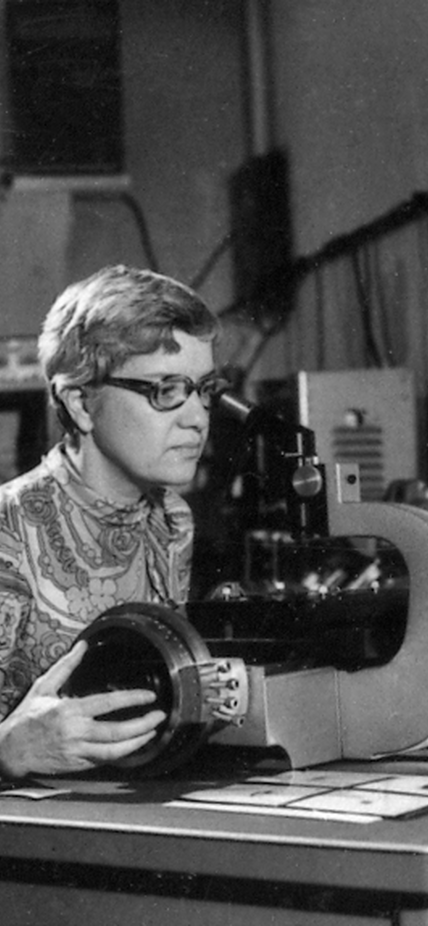
In the late 1970s, Rubin and her long-time collaborator Kent Ford made a groundbreaking observation. They noticed that objects at the far edges of rotating galaxies were moving at the same velocity as objects at their centers, defying predictions from Newtonian physics. Their observations provided the first solid evidence that there was some invisible substance in the cosmos—dark matter—with enough mass to hold these spinning galaxies together. In 1993, Rubin’s work was recognized with the National Medal of Science for her “significant contributions to the realization that the universe is more complex and more mysterious than had been imagined."
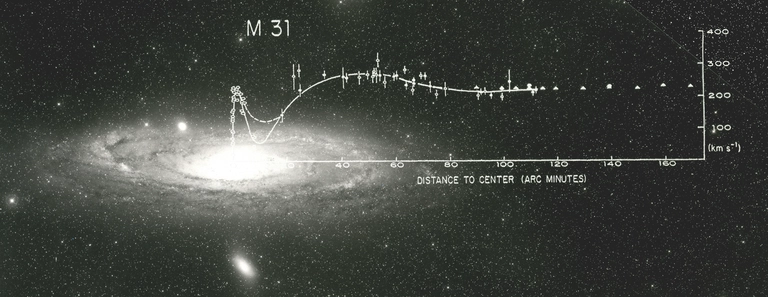
In addition to her own considerable scientific excellence, Rubin was also an ardent feminist and tireless advocate for women’s representation in STEM fields and equal access to career opportunities.
Alycia Weinberger, Associate Director of EPL and astronomer who had the privilege of working alongside Rubin, fondly recalls: “She was a trailblazer for women in science. She was also a wonderful colleague during my first decade at Carnegie Science. She was a friend and an inspiration.”
Rubin’s tireless pursuit of knowledge and dedication to advancing women in science continue to inspire generations today.
Science and Art Collide
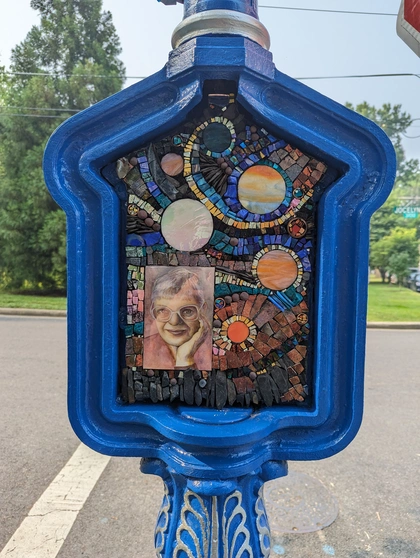
Even though it makes up 80 percent of our universe’s mass, scientists still don’t really know what makes up dark matter. Because of its ongoing mystery, it’s a somewhat challenging topic to convey to the general public. EPL Director Michael Walter thinks art is a great way to share that sense of wonder with the general public.
He stated: “This call box does that beautifully. It expresses the beauty and the wonder of the cosmos in a way that I think Vera would have appreciated.”
The installation, a testament to homegrown D.C. talent, was brought to life by skilled neighborhood artists Danielle Feuillan, Sarah Joyce-McCarron, and Laura McCarron. A radiant, multi-colored mosaic adorned with a hand-painted portrait of Vera Rubin now stands as a captivating tribute to all who stroll by Carnegie’s upper NW campus.
When the call for art submissions first echoed through the community in 2021, Joyce-McCarron and her team painstakingly considered several notable neighborhood figures before being drawn to the remarkable story of Vera Rubin.
"We often walked past her house in the neighborhood and said, ‘Oh, that's where Vera Rubin lived; she discovered dark matter,’ explained Joyce-McCarron. And, of course, we had no clue what that really meant.”
For Joyce-McCarron and her daughter, this project was an opportunity to delve into local history, explore the wonders of the cosmos, and celebrate an extraordinary woman who embodied the spirit of STEAM—Science, Technology, Engineering, Art, and Mathematics.
Amid their efforts, they eagerly awaited the community's response to the grand reveal. The reaction from the neighborhood was overwhelming.
“I’m actually quite moved to be here tonight,” Joyce-McCarron shared. "Throughout the project, we learned more about Vera's story and the magnitude of her impact. We respected it. Valued it. But being here, I feel a profound sense of connection."
“We've made a contribution to the community, and that feels really good.”
Call Box Comeback
Numerous District street corners are adorned with mysterious cast-iron call boxes, remnants of a bygone era. These antiquated structures served as emergency communication devices for police and fire departments from the 1860s through the 1970s. However, with the advent of modern radio communication and the 9-1-1 emergency system, the l boxes fell into disuse and decay.
Despite their dilapidated state, the call boxes endured as familiar fixtures in many corners of the city.
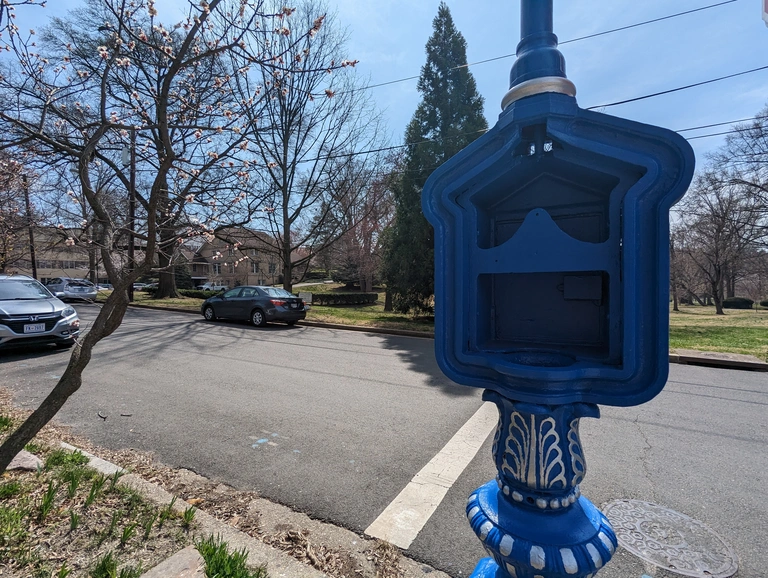
In 2000, an initiative named "Art on Call" was launched by the nonprofit Cultural Tourism D.C., seeking to breathe new life into these neglected relics. Although the project officially concluded in 2009, it sparked a wave of ongoing restoration efforts that continue to this day. Now, the Chevy Chase Community Association has embraced the call box restoration cause, aiming to revitalize several key call boxes in the neighborhood. The Vera Rubin Call Box stands as a testament to their commitment.
According to Edward Hayes, the chair of the Chevy Chase Community Call Box Project, the project is an effort to beautify the neighborhood, identify and celebrate people who have done great work, support local artists, and provide a new way for community members to relate to local art and history.
He adds, “When I see a call box, I think about who from our community we might honor with the box: Is there a politician who lived nearby? A famous writer? Actor? Scientist? We want people from all disciplines to be recognized.”
Hayes has his eyes on fifteen more call boxes around the neighborhood that he wants to restore. Still, due to financial constraints, the committee is focusing its efforts on high-traffic areas so that more people can see these neighborhood gems.
The Big Reveal
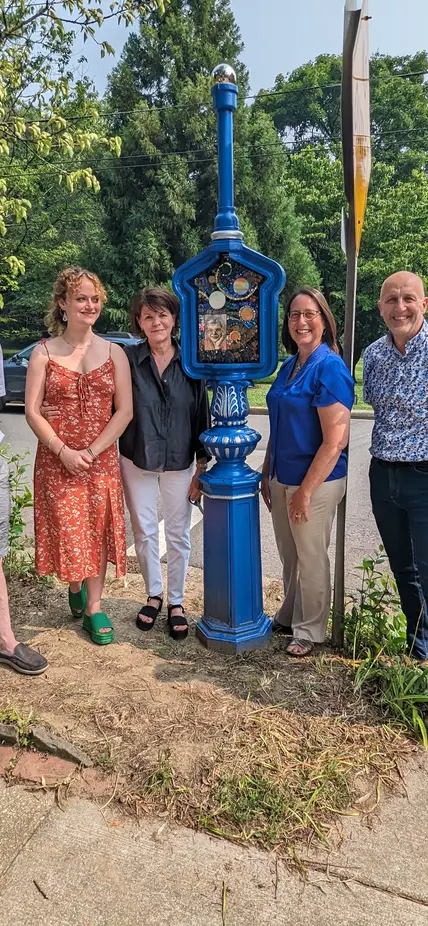
After a couple of delays and much anticipation, the big day finally arrived.
At the grand reveal, neighbors and scientists congregated on the Carnegie Science Broad Branch Road campus to celebrate one of their own. Attendees indulged in space-themed snacks as they exchanged anecdotes about Rubin, immersing themselves in her remarkable legacy.
Prominent speakers from the Carnegie Science community, including Walter and Weinberger, took the stage to pay tribute to Vera Rubin and her groundbreaking discovery. Hayes expressed gratitude to the community while shedding light on the community call box project. The McCarrons illuminated their artistic process and proudly unveiled the captivating artwork to much applause.
During this momentous occasion, Weinberger also led a special moment of silence to honor Ford, who died a few weeks earlier. The ceremony concluded with a heartfelt blessing from local Rabbi Jonathan Roos of Temple Sinai, where Rubin and her family were members.
"The event was amazing," Weinberger reflected. "I think there was a lot of good spirit in the room."
Now, everyone who passes the corner of Jocelyn and 32nd St NW can learn about Vera Rubin and Carnegie Science from this newly minted neighborhood gem. As the colors shift and dance in the sunlight, the artwork encapsulates the essence of Rubin's scientific exploration and discovery, evoking a sense of wonder that continues to thrive at Carnegie Science.
Moreover, Weinberger believes that Rubin, a woman known to have loved all things rainbow, would wholeheartedly approve of the art installation.
"I love the way the art glitters and changes in the sun. I think Vera would have loved the colorfulness of it,” Weinberger remarked.
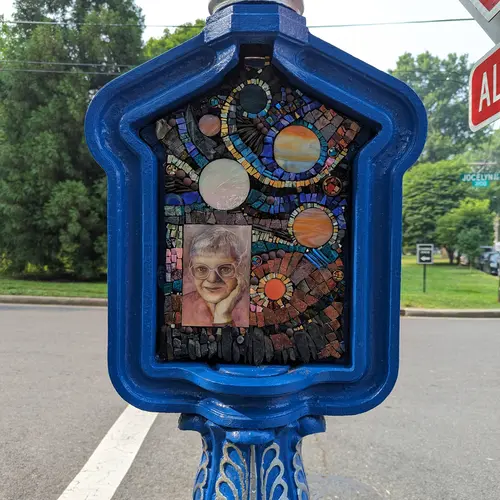
See the Call Box
The call box was restored through the collaborative efforts of District Bridges Chevy Chase Main Street, Ch/Art, the Chevy Chase Community Association, and Historic Chevy Chase DC. It was sponsored by the Advisory Neighborhood Commission 3/4 G, Little Beast, and Carnegie Science.
Visit the Call Box at the Corner of 32nd St. NW & Jocelyn St. NW, Washington, D.C. 20015.
